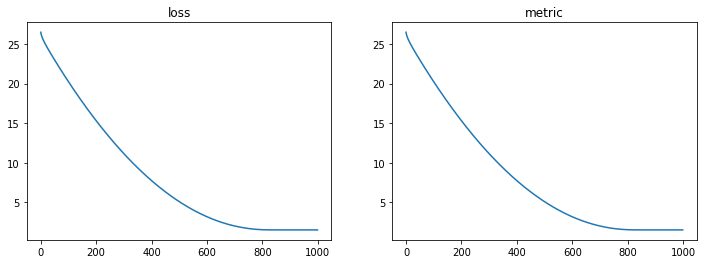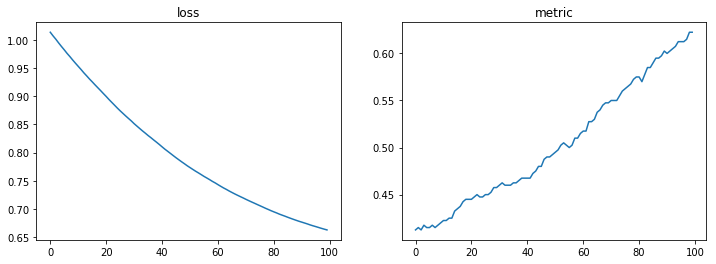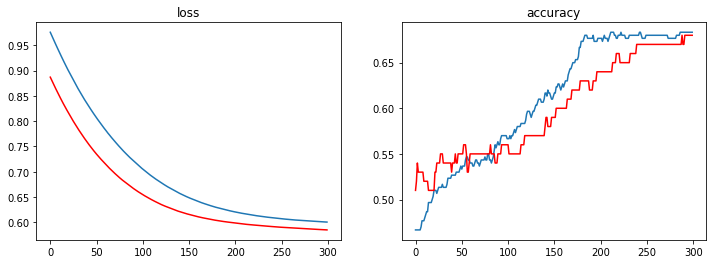Using keras¶
In [1]:
%matplotlib inline
import matplotlib.pyplot as plt
import numpy as np
In [2]:
import warnings
warnings.simplefilter(action='ignore', category=FutureWarning)
import h5py
warnings.resetwarnings()
warnings.simplefilter(action='ignore', category=ImportWarning)
warnings.simplefilter(action='ignore', category=RuntimeWarning)
warnings.simplefilter(action='ignore', category=DeprecationWarning)
warnings.simplefilter(action='ignore', category=ResourceWarning)
In [3]:
from keras.models import Sequential
from keras.layers import Dense, Activation
Using TensorFlow backend.
Access to backend¶
The backend provides a consistent interface for accessing useful data
manipulaiton functions, similar to numpy. It uses whaterver engine is
powerinng keras - in our case, it uses TensorFlow, but it can
also use Theano and CNTK - in each case, the API is the same.
See docs
In [4]:
import keras.backend as K
In [5]:
m = 5
n = 3
p = 4
a = K.random_normal([m, n], mean=0, stddev=1)
b = K.random_normal([n, p], mean=0, stddev=1)
c = K.dot(a, b)
K.eval(c)
Out[5]:
array([[-0.82068974, 2.9188094 , -0.5856401 , 0.20538841],
[-0.40368164, -2.8094885 , 0.5052769 , 0.7337118 ],
[-0.03530191, 0.33472002, 0.13317138, 0.9637028 ],
[ 1.6380395 , 2.0245502 , 0.22507435, 1.0330583 ],
[ 0.291666 , -3.5163243 , 0.5908829 , -0.10566113]],
dtype=float32)
Linear regression¶
In [6]:
np.random.seed(123)
In [7]:
N = 10
W_true = 2
b_true = 1
eps = np.random.normal(0, 1, (N, 1))
X_obs = np.arange(N).reshape((N, 1))
y_obs = np.reshape(W_true * X_obs + b_true + eps, (-1, 1))
In [8]:
X_obs.shape
Out[8]:
(10, 1)
Build model¶
In [9]:
model = Sequential()
model.add(Dense(units=1, input_dim=1, activation=None))
Compile model with optimizer, loss function and evaluaiton metrics¶
In [10]:
model.compile(
optimizer='rmsprop',
loss='mse',
metrics=['mse'])
Fit model¶
In [11]:
history = model.fit(
X_obs,
y_obs,
batch_size=N,
epochs=1000,
verbose=0)
Visualize progress¶
In [12]:
plt.figure(figsize=(12,4))
hist = history.history
plt.subplot(121)
plt.plot(hist['loss'])
plt.title('loss')
plt.subplot(122)
plt.plot(hist['mean_squared_error'])
plt.title('metric')
pass

Get fitted parameters¶
In [13]:
model.get_weights()
Out[13]:
[array([[1.9980325]], dtype=float32), array([0.73654], dtype=float32)]
Logistic Regression¶
In [14]:
import pandas as pd
In [15]:
df = pd.read_csv('https://stats.idre.ucla.edu/stat/data/binary.csv')
In [16]:
df = pd.get_dummies(df, columns=['rank'], drop_first=True)
df.head()
Out[16]:
| admit | gre | gpa | rank_2 | rank_3 | rank_4 | |
|---|---|---|---|---|---|---|
| 0 | 0 | 380 | 3.61 | 0 | 1 | 0 |
| 1 | 1 | 660 | 3.67 | 0 | 1 | 0 |
| 2 | 1 | 800 | 4.00 | 0 | 0 | 0 |
| 3 | 1 | 640 | 3.19 | 0 | 0 | 1 |
| 4 | 0 | 520 | 2.93 | 0 | 0 | 1 |
In [17]:
N = df.shape[0]
In [18]:
X = df.iloc[:, 1:].values
X = (X - X.mean(0))/X.std(0)
y = df.iloc[:, 0:1].values
In [19]:
X.shape
Out[19]:
(400, 5)
In [20]:
y.shape
Out[20]:
(400, 1)
Build model¶
In [21]:
model = Sequential()
model.add(Dense(1, input_dim=X.shape[1], activation='sigmoid'))
Compile model¶
In [22]:
model.compile(
optimizer='adam',
loss='binary_crossentropy',
metrics=['accuracy'])
Fit model¶
In [23]:
history = model.fit(
x=X,
y=y,
batch_size=64,
epochs=100,
verbose=0)
Visualize progress¶
In [24]:
plt.figure(figsize=(12,4))
hist = history.history
plt.subplot(121)
plt.plot(hist['loss'])
plt.title('loss')
plt.subplot(122)
plt.plot(hist['acc'])
plt.title('metric')
pass

In [25]:
model.get_weights()
Out[25]:
[array([[ 0.22816192],
[-0.3955189 ],
[ 0.13052003],
[ 0.12258733],
[-0.1864692 ]], dtype=float32), array([-0.49189493], dtype=float32)]
Regularization and model evaluation¶
In [26]:
X.shape, y.shape
Out[26]:
((400, 5), (400, 1))
In [27]:
from sklearn.model_selection import train_test_split
In [28]:
X_train, X_test, y_train, y_test = train_test_split(X, y, test_size=0.25, random_state=123)
In [29]:
X_train.shape, X_test.shape, y_train.shape, y_test.shape
Out[29]:
((300, 5), (100, 5), (300, 1), (100, 1))
Add regularization to model¶
In [30]:
from keras.regularizers import l2
In [31]:
reg = l2()
model = Sequential()
model.add(
layer=Dense(1,
input_dim=X.shape[1],
activation='sigmoid',
kernel_regularizer=reg))
In [32]:
model.compile(
optimizer='adam',
loss='binary_crossentropy',
metrics=['accuracy'])
In [33]:
history = model.fit(
x=X_train,
y=y_train,
batch_size=64,
epochs=300,
verbose=0,
validation_data = (X_test, y_test))
In [34]:
history.history.keys()
Out[34]:
dict_keys(['val_loss', 'val_acc', 'loss', 'acc'])
In [35]:
plt.figure(figsize=(12,4))
hist = history.history
plt.subplot(121)
plt.plot(hist['loss'])
plt.plot(hist['val_loss'], c='red')
plt.title('loss')
plt.subplot(122)
plt.plot(hist['acc'])
plt.plot(hist['val_acc'], c='red')
plt.title('accuracy')
pass

In [36]:
loss, acc = model.evaluate(X_test, y_test)
100/100 [==============================] - 0s 59us/step
In [37]:
loss, acc
Out[37]:
(0.5850775122642518, 0.68)
Saving and loading models¶
Save model¶
In [38]:
s = model.to_json()
with open('logistic_model.json', 'w') as f:
f.write(s)
Save weights¶
In [39]:
model.save_weights('logistic_wts.h5')
Load model and weights¶
In [40]:
from keras.models import model_from_json
In [41]:
with open('logistic_model.json') as f:
s = f.read()
model_1 = model_from_json(s)
model_1.load_weights('logistic_wts.h5')